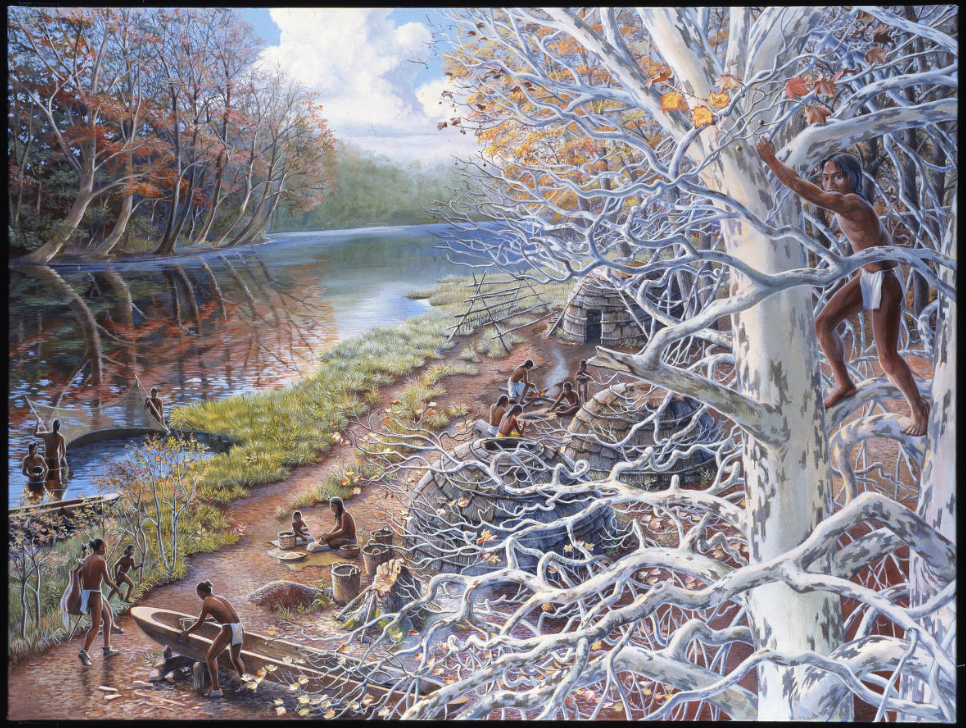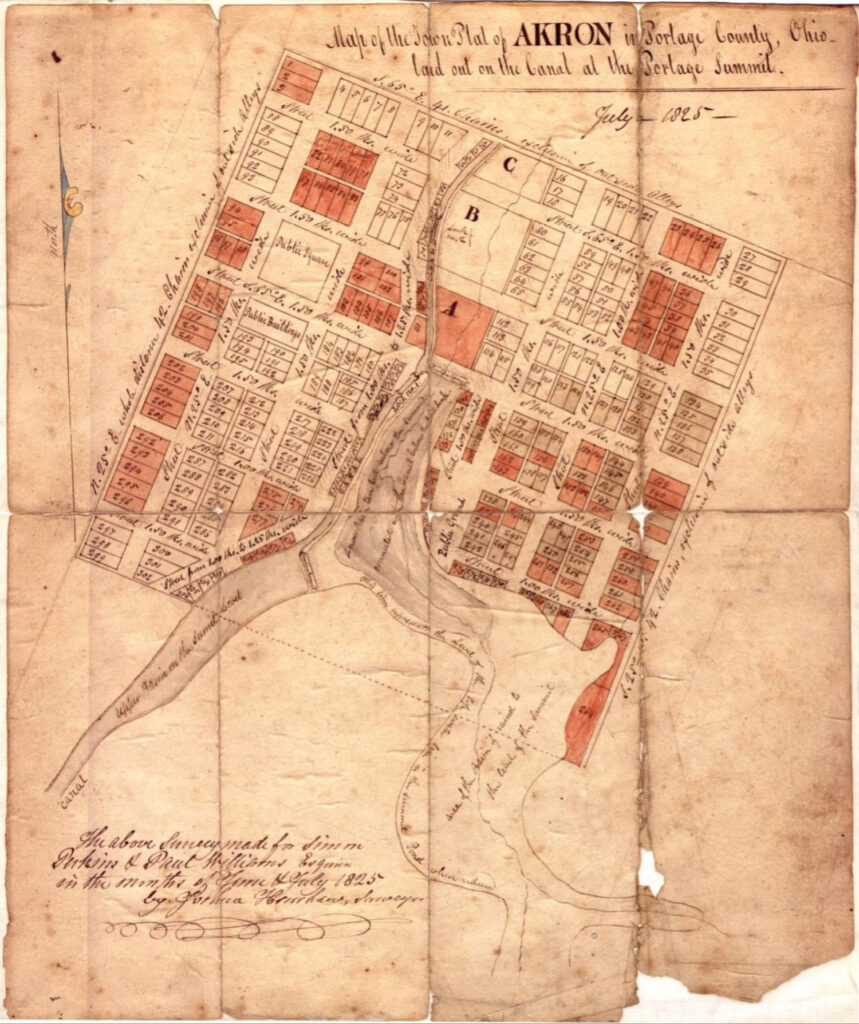Akron celebrates its Bicentennial in 2025, 200 years after its founding.

The land that is now Akron was the home of numerous native tribes for thousands of years. The territory was “owned” by France under the papal doctrine of ‘conquest.’ After the French and Indian War, the land was ceded to Britain, and following the American Revolutionary War, the Treaty of Paris of 1783 ceded British claims to territories west of the Appalachian Mountains to the new confederation of states.
The Northwest Ordinance of 1787 helped to organize these new American territories, and in 1803, Ohio became the 17th state and the first state carved out of the Northwest Territory
In July 1797, Moses Warren ascended the Cuyahoga River from Cleveland to the modern- day Merriman Road area of Akron. He surveyed the exact location of the Indian Trail which had been designated as the western boundary for European settlement, the Portage Path. As many as 250 native people lived in the Cuyahoga valley at the time Europeans first arrived.

In 1798, Simon Perkins came to the Western Reserve of Connecticut, a 27-year-old land agent employed by the Erie Land Company, which was a group of investors that included Moses Cleaveland who would build a town on the banks of the Cuyahoga River at Lake Erie.
By 1806 Perkins had surveyed much of the Western Reserve. The area that presently constitutes Summit and Portage Counties was part of the original Jefferson County, which had been organized under the Northwest Ordinance. In 1800, the area was made part of Trumbull County, and in 1807, the Ohio Legislature created Portage County, which encompassed most of present-day Summit County, including Akron.
During the War of 1812, Simon Perkins, a brigadier-general, led 400 men in the Ohio militia in the defense of Ohio against the British.
In 1807, a sea captain, Joseph Hart, was the first settler of a new town, Middlebury, at the falls of the Little Cuyahoga River. The first pioneer settlement was at the foot of Market Street at Case Avenue. With Aaron Norton as a partner, Captain Hart built a grist mill igniting the growth of Middlebury, which would soon include 16 stores, a sawmill, a carriage manufacturer, a machine shop, a steel furnace, a pottery, a cabinet shop, a woolen factory, and a shop where fireplace matches were made.
In 1825, Middlebury ‘s population rivaled that of the town that Moses Cleveland had founded at the mouth of the Cuyahoga River at Lake Erie.
In the summer of 1825, Simon Perkins asked Connecticut surveyor Joshua Henshaw to create a plat map of a new village that would rise from his lands that sat astride one of North America’s great watershed divides. Like educated men of his day, Perkins studied the classics, and when naming his new town, selected the Greek word ákros, signifying a summit or high point.

Missing from most people’s memory is the man who owned one-third of the land on that original plat – Paul Williams, who, like Perkins, came from Connecticut. Williams bought 109 acres of land in 1812 for $2.50/ acre and engaged in farming. Unlike Perkins, Williams brought his family here and built a log cabin near what is now the intersection of Buchtel Avenue and Broadway. Another early settler was Major Miner Spicer from Groton, Connecticut who built a log cabin in the forest in 1810 – on land now owned by the University of Akron.
On November 28, 1825 ,the two men appeared at the courthouse in Ravenna, the county seat, to sign and seal the deed. The plat map was recorded on December 6, 1825, bringing the town of Akron into existence.
The town plat refers to Akron as a village. Akron was considered a town “by courtesy and general consent” between 1825 and 1836. Blurring the issue was the founding of the village of Cascade by Eliakim Crosby in 1831 – sometimes called “North Akron.” The two Akrons feuded until both were officially incorporated as a town on March 12, 1836. Akron was incorporated as a city in 1865.
Although the town plat was filed in December, July has always been the month of choice for celebration. The centennial and sesquicentennial celebrations held in 1925 and 1975 were in July. The 175th anniversary was officially observed in September 2000.

Akron’s founders remade the land into something they understood – a town not unlike those they knew in New England. They were fueled by the possibilities of new opportunities and the hope of prosperity. As industrialization dominated this American “heartland,” Akron would re-invent itself every few decades, a process that continues today, in a city defined by three words:
INVENTIVE, INDUSTRIOUS, INSPIRED
(Thanks to the Akron-Summit County Public Library’s Special Collections Division and Jane Gramlich for researching this account.)